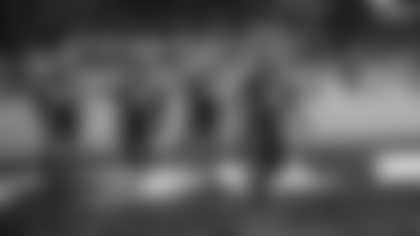When Russell Wilson showed up at rookie minicamp in May of 2012, he was impressive enough that, after three days of watching the third-round pick practice, Seahawks coach Pete Carroll announced that Wilson would get a chance to compete for the starting job.
Even so, most figured that overtaking veterans Matt Flynn and Tarvaris Jackson would be too much for Wilson to accomplish in one training camp, especially since he'd be splitting reps three ways with those two. If anything, it appeared the Seahawks had found a solid backup who might develop into a starter somewhere down the road.
Then August rolled around, and Wilson went about changing the trajectory of the franchise.
This week at Seahawks.com, we're looking at five of the biggest training camp surprises that have happened under Pete Carroll and John Schneider. These developments serve as reminder that nothing is set in stone this time of year, and they also reveal a little bit about Carroll and Schneider's methods.
2012: Russell Wilson wins the quarterback competition
Once the Seahawks signed Matt Flynn in March of 2012, just about everyone assumed the Seahawks had their starting quarterback. After all, Flynn was considered the best quarterback available in free agency not named Peyton Manning, and considering how impressive he had been in limited starts in Green Bay, everyone figured Flynn would be going somewhere to be a starter. But as soon as the Seahawks signed Flynn, Carroll made it clear that he would have to compete with Jackson for the starting job, then even with those two on the roster, the Seahawks went ahead and took Wilson in the third round of the draft a month later.
When camp began, Carroll had his quarterbacks split reps evenly with the first team, and it didn't take long to realize that Wilson indeed had a real shot to win the job. Wilson was even more impressive in preseason games, and following the third preseason game, Carroll named Wilson his starter.
Wilson struggled at times early in his rookie season, but by the end of the year he had fully won over his doubters with impressive performances like the overtime win in Chicago and his two road playoff games in Washington and Atlanta. Wilson would make the Pro Bowl in each of his first two seasons, and along with the league's best defense and the Marshawn Lynch-led rushing attack, he helped the Seahawks to back-to-back Super Bowl appearance, including a blowout win in Super Bowl XLVIII.
What it told us about Carroll and Schneider:
First and foremost, giving Wilson a legitimate chance to win the job was the ultimate example of Carroll's 'Always Compete' philosophy. It's one thing to let a rookie defensive back or lineman fight for a starting job; it's something entirely different to do it at quarterback. By splitting reps three ways, the Seahawks were risking that any of the three quarterbacks, let alone a rookie, would be less prepared for the start of the season, but that was worth the risk to Carroll to make sure he got the right guy.
In Wilson, who most people thought was too short for the job, as well as converted defensive tackle J.R. Sweezy, who was a Week 1 starter at a new position, the Seahawks also showed they aren't afraid to take risks or play rookies just about anywhere on the field. The Seahawks might have been better off in Week 1 playing with Flynn or Jackson at quarterback, or with a veteran at right guard, but Carroll and Schneider saw the long game and realized how bright the future could be with those two and a rookie class that also included Bobby Wagner, Bruce Irvin, Robert Turbin and Jeremy Lane.
From a scouting perspective, drafting Wilson was an example of Schneider not letting one physical trait define a player. Every team knew Wilson had the arm strength, accuracy, athleticism, smarts and leadership ability to succeed, but most were too hung up on one number—5-10 5/8—to take a risk on Wilson. But where other teams saw a liability, the Seahawks saw a preponderance of positive traits that would allow him to overcome that lack of height.






